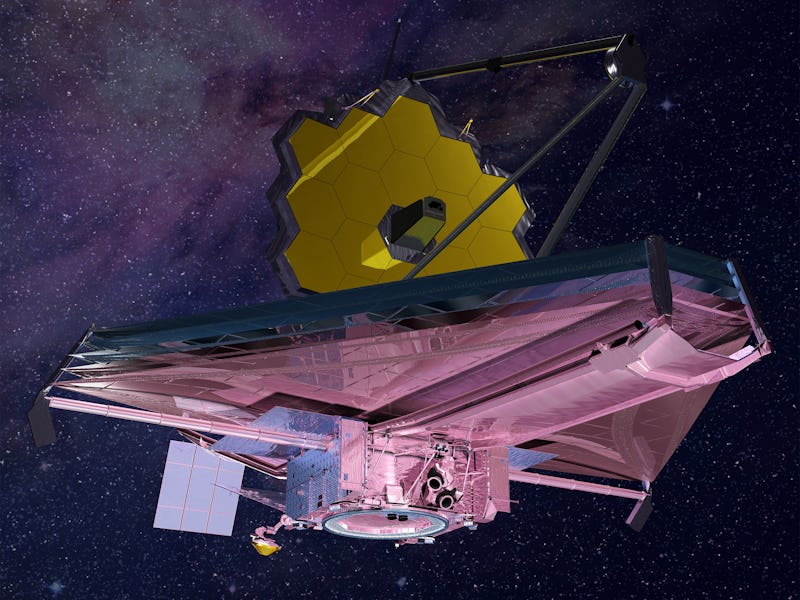Everything You Need to Know About NASA's James Webb Space Telescope
The next-gen Hubble will be the world's most powerful space telescope.

Pick your favorite NASA image of the past decade, and chances are good the Hubble Space Telescope captured it. But that little piece of space equipment is starting to show its 25 years. For context: Hubble launched while the first George Bush was president, when people didn’t even use dumb cell phones, and before Friends premiered.
Hubble is old. And while it’s still helping us learn about outer space, it no longer makes sense to send our astronauts up to make repairs, replace parts, and keep the telescope running. It’s time to retire Hubble.
Enter Hubble’s successor: the James Webb Space Telescope, named after former NASA administrator James E. Webb. When complete, Webb will be the most powerful space telescope ever built — with unprecedented ability to see into the universe at higher resolutions, with new instrumentation.
Webb will be an invaluable tool to explore the far reaches of space — especially early galaxies, small details like debris disks around stars, and direct images of exoplanets. (The last part is particularly exciting, given the hype around the possibility of finding habitable exoplanets elsewhere.)
Plans for Webb stretch back to 1996. Along the way, the proposed telescope bounced from approved to canceled — Congress almost scrapped the whole thing in 2011 — and approved again. The government finally approved the current budget of $8.8 billion in 2013, with a scheduled launch set for 2018.
As of now, NASA is on track to meet that launch mark. NASA engineers have been meeting most of its construction goals — the latest of which was the installation of the Webb’s mirrors using a high-precision robotic arm. That might not sound particularly exciting, but bear in mind that the mirrors must sit exactly right — the slightest aberration or misalignment would ruin practically everything the telescope is supposed to do.
And mirrors can only do so much. Webb’s ability to scan the universe across a wider range of the electromagnetic spectrum will be its defining utility. Most of space’s interesting bits exist outside the visible spectrum. There are planet temperatures in infrared and atmospheric particles like CO2 or methane in ultra-violet light. There are information-rich X-rays and gamma-rays. A lot of them. It will be groundbreaking to have a single tool that can simultaneously observe all these features — especially when a lot of phenomena are emitting different types of energies all at once.
Specifically, Webb will be able to conduct ultra-high resolution spectroscopy at a range four times larger than Hubble currently can. It will be able to better observe really hot and really cold bodies at the same time. In fact, it will be able to break up the light from more than 100 separate individual objects all at once. Its 6.5-meter diameter can capture seven times the amount of light that Hubble can. Its sunshield — a brand new type of technology that doesn’t block light, but reflects it in the opposite direction — will help keep the telescope cool and comfortable under the sun’s direct rays.
NASA is aiming for a mission timeline between five-and-a-half and 10 years. If Hubble’s durability is any indication, that’s a conservative goal. With state-of-the-art instruments and parts, Webb is likely to stay in great shape for a generation. Furthermore, with recent strides in space robotics, it will be cheaper for NASA to service Webb more frequently than Hubble (which required crews to make repairs by hand).
It’s an exciting time to be studying space. Though NASA’s central focus is on Mars, the distant parts of the universe are where the action’s hottest. Perhaps Webb will stumble on dozens of other Mars-like planets. Even better is the possibility of finding a new Earth. The 2018 launch can’t come soon enough.